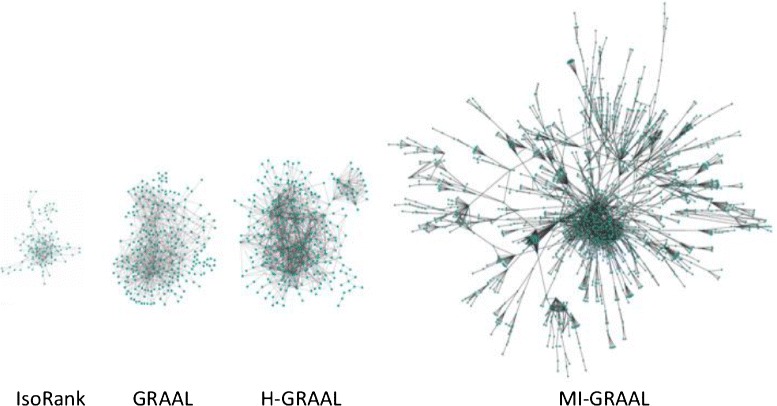Fig. 5.

Illustration of the performance of different global network aligners with respect to LCCS. The figure shows LCCSs between yeast and human PPI networks revealed by IsoRank (116 proteins and 261 interactions), GRAAL (267 proteins and 900 interactions), H-GRAAL (317 proteins and 1290 interactions), and MI-GRAAL (1858 proteins and 3467 interactions). GHOST and MAGNA, as more recent aligners, produced even larger LCCSs (figures not shown). Namely, GHOST’s LCCS, as reported in [69], has 1622 proteins and 5356 interactions. MAGNA, when run on MI-GRAAL’s initial population, returns LCCS with 1660 proteins and 3401 interactions. MAGNA, when run on GHOST’s initial population, returns LCCS with 1327 proteins and 4363 interactions. Note that it is not the raw node and edge counts alone that should be compared between two methods’ LCCSs. Namely, a good method should find an LCCS that has many edges as well as nodes, while at the same time penalizing for edges from both the smaller and larger networks that are misaligned under the given alignment (just as S 3 does). A summary LCCS measure capturing all of this was recently proposed [69]. The resulting summary LCCS scores are 51, 54, 59, and 59 % for MI-GRAAL, GHOST, and the two MAGNA versions, respectively. Clearly, GHOST is superior to MI-GRAAL, while MAGNA is superior to GHOST (and thus to MI-GRAAL). The LCCS figures of IsoRank, GRAAL, H-GRAAL, and MI-GRAAL are adopted from the original publications [38–40]
